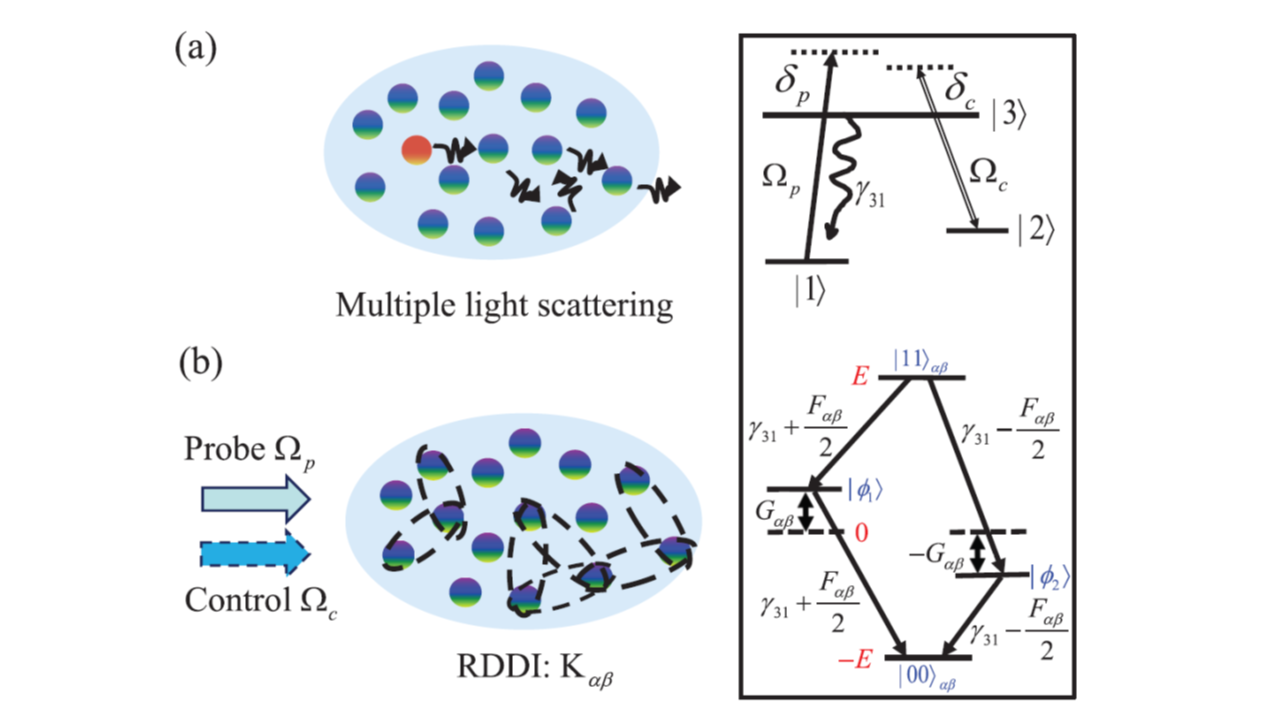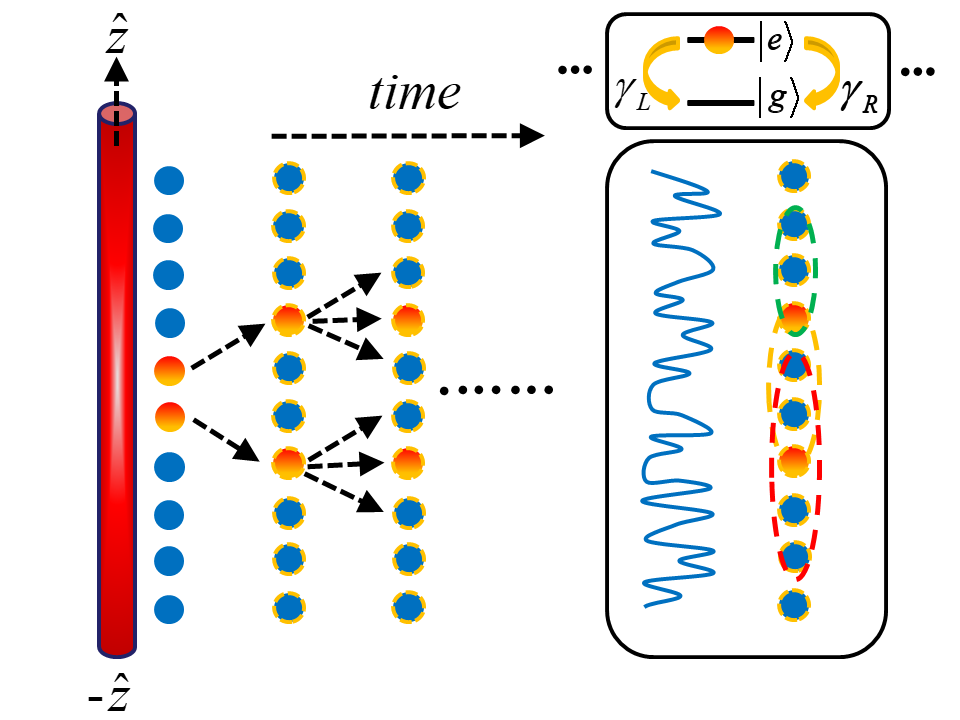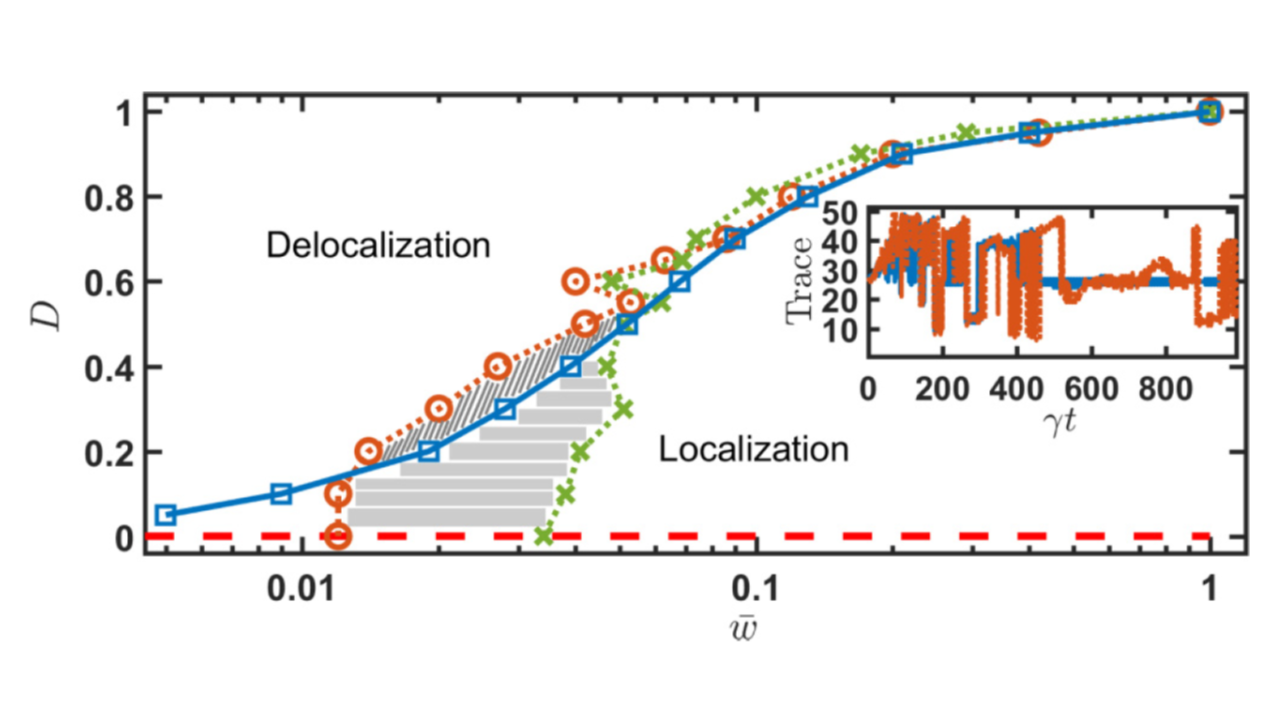H. H. Jen, G.-D. Lin, and Y.-C. Chen
Phys. Rev. A 105, 063711 (2022)

Resonant dipole-dipole interaction (RDDI) emerges in strong light-matter interacting systems, which leads to many fascinating phenomena such as cooperative light scattering and collective radiation. Here, we theoretically investigate the role of RDDI in electromagnetically induced transparency (EIT). The resonant dipole-dipole interactions manifest themselves in the cooperative spontaneous emission of the probe light transition, which give rise a broadened linewidth and associated collective frequency shift. This cooperative linewidth originates from the nonlocal and long-range RDDI, which can be determined by the atomic density, optical depth, and macroscopic length scales of the atomic ensemble. We present the finding that EIT spectroscopy essentially demonstrates all-order multiple scattering of RDDI. Furthermore, we find that the EIT transparency window becomes narrower as the cooperative linewidth increases, which essentially reduces the storage efficiency of slow light as an EIT-based quantum memory application.
H. H. Jen
Phys. Rev. A 105, 023717 (2022).

The atom-waveguide interface mediates significant and long-range light-matter interactions through guided modes. In this one-dimensional system, we theoretically investigate the excitation localization of multiple atomic excitations under strong position disorder. Deep in the localization side, we obtain the time evolutions of quantum correlations via Kubo cumulant expansions, which arise initially and become finite and leveled afterward, overtaking those without disorder. This indicates two distinct regimes in time: before the onset of excitation localization, the disorder engage the disturbance of quantum correlations, which is followed by disorder-assisted buildup of quantum correlations that maintain at a later stage owing to the absence of excitations diffusion. The crossing of distinct regimes is pushed further in time for longer-range correlations, which indicates a characteristic timescale needed for disorder to sustain them. We also explore the effect of directionality of couplings and resonant dipole-dipole interactions, which can drive the system toward the delocalized side when it is under chiral couplings or large dipole-dipole interaction strengths. The time-evolved quantum correlations can give insights into the studies of few-body localization phenomenon and nonequilibrium dynamics in open quantum systems.
H. H. Jen
Phys. Rev. A 103, 063711 (2021)
Collective decays of multiply excited atoms become subradiant and bound in space when they are strongly coupled to the guided modes in an atom-waveguide interface. In this interface, we analyze their average density-density and modified third-order correlations via Kubo cumulant expansions, which can arise, and finite correlations can be sustained for long time. The shape-preserving dimers and trimers of atomic excitations emerge in the most subradiant coupling regime of light-induced dipole-dipole interactions. This leads to a potential application of quantum information processing and quantum storage in the encoded nonreciprocal spin diffusion, where its diffusion speed depends on the initial coherence between the excited atoms and is robust to their relative phase fluctuations. The state-dependent photon routing can be viable as well in this interface.
H. H. Jen
PHYSICAL REVIEW A 102, 043525 (2020)

One-dimensional quantum emitters with chiral couplings can exhibit nonreciprocal decay channels, along
with light-induced dipole-dipole interactions mediated via an atom-waveguide interface. When the position disorders are introduced to such atomic array, we are able to identify the phase transition from excitation delocalization to localization, with an interplay between the directionality of decay rates and the strength of light-induced dipole-dipole interactions. Deep in the localization phase, its characteristic length decreases and saturates toward a reciprocal coupling regime, leading to a system dynamics whose ergodicity is strongly broken. We also find an interaction-driven re-entrant behavior of the localization phase and a reduction of level repulsion under strong disorder. The former coincides with a drop in the exponent of power-law decaying von Neumann entropy, which gives insights to a close relation between the preservation of entanglement and nonequilibrium dynamics in open quantum systems, while the latter presents a distinct narrow distribution of gap ratios in this particular disordered system.
